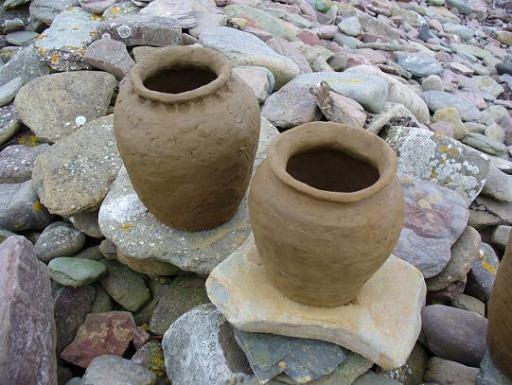
Recently Rated:
Stats
Blogs: 8
images: 37
Location: Ankara
Work interests:
Affiliation/website:
Preferred contact method: Reply to post in blog/forum/group
Preferred contact language(s):
Contact:
Favourite publications:
Work interests:
Affiliation/website:
Preferred contact method: Reply to post in blog/forum/group
Preferred contact language(s):
Contact:
Favourite publications:
Founding Member
Location: Ankara, Turkey
Work: British prehistory & archaeology, Anatolian prehistory & archaeology, anthropology, artifact illustration,ceramic petrology, ceramic ethnoarchaeology,PXRF Analysis, Japanese language and culture,experimental archaeology, prehistoric technologies,Iron Age Scotland, Jomon pottery, Jomon Archaeology (Japan).
Affiliations: Present: British Institute at Ankara, postdoctoral research fellow.
Biographical: Ba(Hons) Applied Arts: ceramic design -Edinburgh College of Art 2005 Msc Archaeology - University of Edinburgh 2006 PhD Archaeology - University of Edinburgh 2007 - 2012 National Museum of Scotland archaeology department volunteer 2006-2007 National Museum of Scotland archaeology department post excavation staff (outside contractor) 2009-2014 Member of : Scottish Potters Association British Institute at Ankara Society of Antiquaries of Scotland (elected fellow) Prehistoric Ceramics Research Group Association of Archaeological Illustrators and Surveyors (now exists as a branch of the Institute for Archaeologists)
Favourite Publications: Proceedings of the Society of Antiquaries of Scotland Proceedings of the Prehistoric Society Antiquity Journal of Anthropology (Ethnos) Cultural Anthropology Ceramic Review
Work: British prehistory & archaeology, Anatolian prehistory & archaeology, anthropology, artifact illustration,ceramic petrology, ceramic ethnoarchaeology,PXRF Analysis, Japanese language and culture,experimental archaeology, prehistoric technologies,Iron Age Scotland, Jomon pottery, Jomon Archaeology (Japan).
Affiliations: Present: British Institute at Ankara, postdoctoral research fellow.
Biographical: Ba(Hons) Applied Arts: ceramic design -Edinburgh College of Art 2005 Msc Archaeology - University of Edinburgh 2006 PhD Archaeology - University of Edinburgh 2007 - 2012 National Museum of Scotland archaeology department volunteer 2006-2007 National Museum of Scotland archaeology department post excavation staff (outside contractor) 2009-2014 Member of : Scottish Potters Association British Institute at Ankara Society of Antiquaries of Scotland (elected fellow) Prehistoric Ceramics Research Group Association of Archaeological Illustrators and Surveyors (now exists as a branch of the Institute for Archaeologists)
Favourite Publications: Proceedings of the Society of Antiquaries of Scotland Proceedings of the Prehistoric Society Antiquity Journal of Anthropology (Ethnos) Cultural Anthropology Ceramic Review


Tannins are very stable compounds - I think they are a component of the humic acids found in bogs (giant tea ponds). They are often found as defense chemical in plants because they are complex reactive compounds that taste terrible and bind to surface proteins in our mouth. They are used to preserve leather among other things. And are in the bark/skin of bracken fern rhizomes, which could have been an important early starchy food in northern islands of the UK.
Funny you should say that, I have actually tried cooking in one - I'll put the pictures up here. I just made porridge, as it was really to test heating efficiency...the tannin absorbency hypothesis is very interesting, it certainly explains why unglazed eathenware teapots make really delicious tea.I wonder if tannins would be stable enough to be tested for?
Have they been tried for cooking? Food is said to taste better when cooked in earthenware pots. It just occurred to me now that the clay might absorb tannins from wild food sources, at least in the initial stages of use (and maybe not enough to make any difference for eating).People have looked residues that accumulate on pot surfaces, but not so much at what happens inside the clay matrix, I suppose.